Photos along the Blueway:
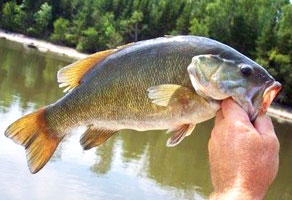
Smallmouth bass
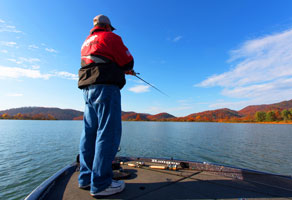
Fishing at Lake Moomaw
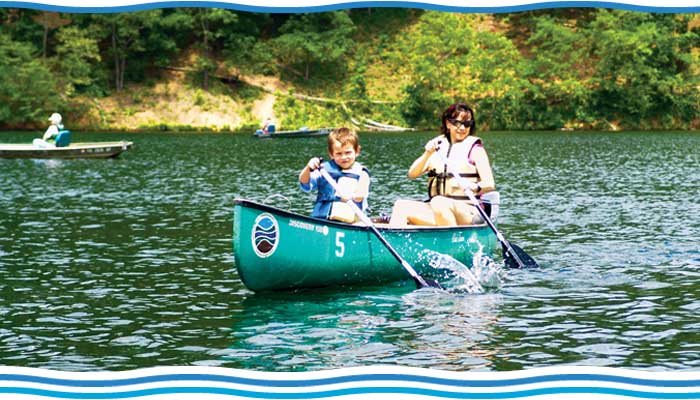
The Alleghany Highlands is in the western part of the Commonwealth of Virginia along the border of West Virginia. The Alleghany Highlands is about a one hour drive from Roanoke and approximately three hours from Richmond, Washington, DC, and Charleston, WV. Visitors can also arrive in the Alleghany Highlands by Amtrak.
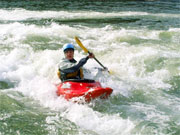 Rapids along the Jackson and Cowpasture Rivers range from Class I to Class III. However, river levels are influenced by recent rainfall. Water levels on the Jackson River are also affected by releases from Gathright Dam at the southern end of Lake Moomaw. Paddlers should be aware of river levels when planning trips.
Rapids along the Jackson and Cowpasture Rivers range from Class I to Class III. However, river levels are influenced by recent rainfall. Water levels on the Jackson River are also affected by releases from Gathright Dam at the southern end of Lake Moomaw. Paddlers should be aware of river levels when planning trips.
VIEW WATER LEVEL INFORMATION FOR:
Lake Moomaw >
Jackson River: Section 2 – Below Gathright Dam >
This stretch of river is passable when the water level is between 8.85 feet and 10 feet or river flow is between 200 CFS and 1000 CFS. Higher water may result in faster current or more rapids. Lower water may result in shallow water or exposed logs and rocks.
Jackson River: Section 3 – in Covington >
This stretch of river is passable when the water level is between 5.0 feet and 6.5 feet or river flow is between 500 CFS and 1900 CFS. Higher water may result in faster current or more rapids. Lower water may result in shallow water or exposed logs and rocks.
Cowpasture River >
This stretch of river is passable when the water level is between 2.0 feet and 4.0 feet or river flow is between 200 CFS and 1400 CFS. Higher water may result in faster current or more rapids. Lower water may result in shallow water or exposed logs and rocks.
Definitely. While there are some rapids to navigate on the Jackson River that can be quite challenging especially when water levels are high, the Alleghany Highlands Blueway also includes two lakes. Exploring Lake Moomaw and Douthat Lake is a relaxing way to paddle with children who will enjoy fishing, swimming and seeing wildlife. Check water level information for Lake Moomaw, Jackson River: Section 2, Jackson River: Section 3 and the Cowpasture River.
Spring, summer and fall are great times to paddle the Alleghany Highlands Blueway. Water temperatures usually get above 50 degrees by late April. A good safety rule to minimize the risk of hypothermia in the early spring or late fall is to never paddle when the air and water temperatures combined are less than 110 degrees.
A life jacket is required and should be worn by each person in the watercraft. Virginia law requires children 16 and under to wear their life jacket any time they are on a boat.
Recommended equipment includes a river map, food, water, sunscreen, footwear (water sandals, river shoes, or old tennis shoes), a shirt for sun protection, a cap or sun hat, insect repellent, sunglasses, ID, cell phone in waterproof dry box, and a trash bag.
You may also want to bring a camera, binoculars, and dry bag, fire starter, fishing gear and license, pocket knife, paddling gloves, rain gear, toilet paper and baggies, waterproof flashlight and extra batteries, and extra lines or tie-downs.
There are no campsites along the Jackson River. Camping is permitted on National Forest property along the Cowpasture River. Established camping areas are available at Lake Moomaw and Douthat State Park.
Anyone over the age of 16 is required to have a fresh water fishing license from the Virginia Department of Game and Inland Fisheries. Licenses can be obtained at local sporting goods stores or online.
The Jackson River: Section 2 below Gathright Dam is home to rainbow trout, wild brown trout, smallmouth bass, rock bass (redeye), and redbreast sunfish. All rainbow trout between 12 and 16 inches and all brown trout less than 20 inches must be released immediately.
The Jackson River: Section 3 below Covington is not only scenic and peaceful, it also offers excellent smallmouth bass and muskie fishing.
The Cowpasture River offers smallmouth bass, rock bass, muskies, and redbreast sunfish.
Douthat Lake is located within Douthat State Park. This 50-acre lake is a fee-fishing lake that is stocked with rainbow, brown, and brook trout twice a week during the fee season (from the first Saturday in April through June 15, and from September 15* through October 31). In addition to trout, the lake also has very good largemouth bass fishing, and fair sunfish, black crappie, and channel catfish opportunities; it has become an excellent chain pickerel lake, with October being the top month.
Before Lake Moomaw was completed in the early 1980s, fisheries biologists determined it had the potential for a “two-story” sport fishery. This simply means that the reservoir would be deep enough for both warm water fish (bass, catfish, sunfish, crappie) and coldwater fish (trout). With this in mind, the lake was stocked with thousands of largemouth bass, bluegill, redear sunfish, and channel catfish. The Jackson River was already home to wild populations of smallmouth bass, rock bass, and chain pickerel, so it was understood that these species would acclimate to their new surroundings. Black crappie and yellow perch were later additions to the fishery.
Several smaller streams and creeks that feed into the Jackson River offer excellent fishing opportunities. Potts Creek flows from neighboring Craig County into the Jackson River in Covington. Dunlap Creek, which flows under the historic Humpback Bridge, meets the Jackson River on the western edge of downtown Covington.
Portions of the Jackson and Cowpasture Rivers flow through national forest property, where it is possible to stop and picnic. However, most of the land along the rivers is private property. We ask that paddlers respect private property, obey No Trespassing signs and picnic on shore only at public access points.
Yes, professional outfitters can provide rentals, shuttles and all the other equipment you’ll need for a fun and safe day on the water.
Due to the mountains and remoteness of much of the area, portions of the Blueway do not have cell phone service. While they are always a good idea to bring in a waterproof container, know that cell phones will not always work along the river, so be sure to always paddle with others for your safety.
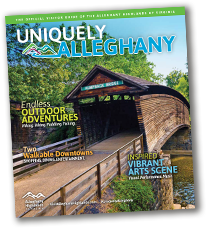
Sign up to receive
News & Updates >
Get the latest news and be the first to learn about new deals and events
Dec 18, 2025
Fx2 Photo Show
Dec 19, 2025
Fx2 Photo Show
Dec 19, 2025
Mountain Opry Presents: Christmas in the Mountains with the AHS Choir